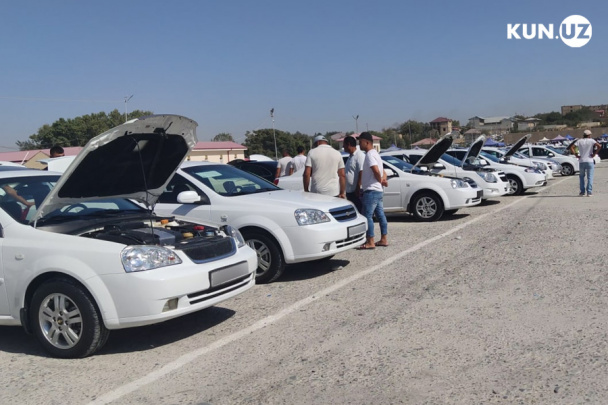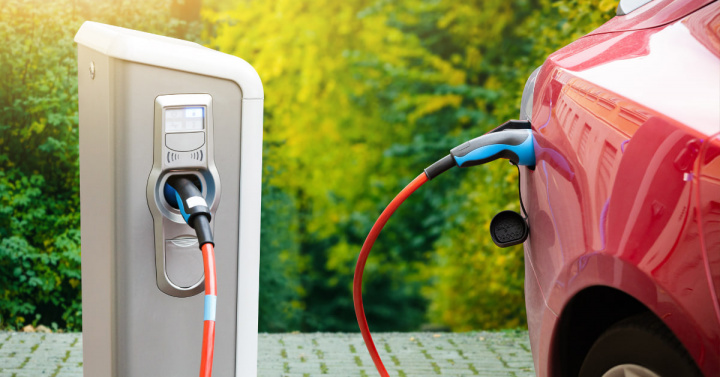The hidden costs of going green: Trillions collected, but no benefits for EV owners
In Uzbekistan, where stable gas supply at methane stations is unreliable and quality gasoline costs more than in the United States, electric vehicles had become the only viable alternative for a certain segment of the population. However, the steep and unreasonable increase in the utilization fee for electric vehicles has dashed these hopes.

Photo: longreads.cabar.asia
The growing demand for environmentally friendly transport in Uzbekistan is being stifled by non-tariff barriers.
According to a resolution by the Cabinet of Ministers, starting from May 1, 2025, the utilization fee for imported electric vehicles will be significantly increased. For electric vehicles that are less than three years old, the fee will rise from 30 times the base calculation unit (BCU) to 120 times, reaching up to 45 million UZS. If the electric vehicle is more than three years old, the fee will be 210 times the BCU, amounting to 78.75 million UZS (currently, this amount is 90 times the BCU).
Where is the 1.8 trillion UZS collected for nonexistent utilization?
According to the Customs Committee, from January to September 2024 alone, Uzbekistan imported:
• 26,643 gasoline-powered cars
• 11,424 hybrid vehicles
• 16,205 electric vehicles
Even if we assume that all imported gasoline-powered cars were brand new, at a minimum, the utilization fees collected would be:
• 1.087 trillion UZS from gasoline cars
• 165 billion UZS from electric cars
• 117 billion UZS from hybrid cars
Since October 1, 2024, the BCU increased from 340,000 UZS to 375,000 UZS. Based on this, in the last quarter of 2024, at least the following amounts should have been collected:
• 282 billion UZS from 6,269 gasoline cars
• 89 billion UZS from 7,886 electric cars
• 68 billion UZS from 6,056 hybrid cars
In total, for 2024, the utilization fees collected from imported passenger cars alone should have amounted to at least 1.8 trillion UZS. This is a conservative estimate, meaning the actual amount could be even higher.
For reference, hybrid cars are subject to different utilization fees depending on the model — some are taxed like gasoline cars based on engine volume, while others are taxed like electric cars. Due to a lack of clear categorization, the lowest possible estimate was used in calculations.
So far, no government report has transparently disclosed revenue from utilization fees, nor has there been any public accounting of expenditures — if any — related to vehicle utilization.
Are "locally manufactured" cars not polluting the environment?
The Cabinet of Ministers' 2020 Resolution No. 327 clearly states that both importers and domestic manufacturers of vehicles in Uzbekistan must pay utilization fees.
For instance, UzAuto Motors sold 353,730 cars in Uzbekistan in 2024. Based on that, the following utilization fees should have been transferred to the state budget:
• Cobalt (127,240 units sold) – at a BCU of 340,000 UZS, the total should be 5.191 trillion UZS
• Damas (106,000 units) – 1.081 trillion UZS
• Tracker (37,903 units) – 1.546 trillion UZS
• Onix (33,644 units) – 1.373 trillion UZS
• Labo (25,319 units) – 258 billion UZS
• Lacetti (18,327 units) – 747 billion UZS
• Equinox (2,314 units) – 94 billion UZS
• Malibu (1,489 units) – 60 billion UZS
• Captiva (798 units) – 32 billion UZS
• Traverse (517 units) – 52 billion UZS
• Tahoe (178 units) – 18 billion UZS
According to Kun.uz's calculations, UzAuto Motors should have paid at least 10.452 trillion UZS in utilization fees in 2024—if the company was not granted secret exemptions. There is no way to verify whether such exemptions exist because officials refuse to answer questions on the matter.
If UzAuto Motors were suddenly required to pay nearly 10.5 trillion UZS in utilization fees today, one can only imagine what would happen to the company’s financial stability.
According to the Tax Committee, UzAuto Motors paid 2.8937 trillion UZS in taxes from January to October 2024:
• 1.7638 trillion UZS in value-added tax (VAT)
• 858.1 billion UZS in corporate income tax
• 143.8 billion UZS in personal income tax
• 6.2 billion UZS in property tax
• 4.2 billion UZS in land tax
• 117.6 billion UZS in other payments
Another potential future monopoly in the electric vehicle market, BYD Uzbekistan, also has the right to import cars without paying utilization fees.
What was the real purpose of the utilization fee?
This raises an obvious question: was the utilization fee really meant to protect the environment, or was it just a tool to artificially increase the cost of imports and protect domestic automotive monopolies?
Despite the huge amount of money collected, there have been no subsidies or financial assistance for electric vehicle owners — such as helping them replace their batteries when they fail. Importers and consumers have no clear idea what they are paying for.
Do other countries have a utilization fee?
Countries like Russia and Kazakhstan have a similar system, where utilization fees serve as a protectionist tool for local car manufacturers.
After joining the World Trade Organization (WTO), these countries were forced to lower customs duties but introduced relatively high “environmental taxes” to protect their domestic market.
Interestingly, Kazakhstan does not charge a utilization fee for electric vehicles. For gasoline-powered cars, the fees are as follows:
• For engines up to 1,000 cm³ – 294,900 KZT (approx. 7.4 million UZS)
• For engines 1,000-2,000 cm³ – 603,750 KZT (approx. 17.3 million UZS)
• For engines 2,000-3,000 cm³ – 862,500 KZT (approx. 24.7 million UZS)
• For engines above 3,000 cm³ – 1,983,750 KZT (approx. 56.8 million UZS)
In European countries, the utilization fee varies based on the type, age, and condition of the vehicle. The fees are generally much lower than in Uzbekistan:
• Germany: €100–€200
• France: €50–€150
• UK: £100–£150
In conclusion, it should be noted that in Uzbekistan, where long queues for gas form as soon as cold weather sets in and quality gasoline is more expensive than in the United States, electric vehicles had remained the only alternative. However, the exorbitant increase in the utilization fee — driven more by a desire to support local auto monopolies than by environmental concerns — has shattered these hopes.
Related News

19:43 / 02.07.2025
Uzbekistan imports over 18,000 cars in early 2025

17:34 / 01.07.2025
Tashkent to expand electric bus fleet with 200 more Yutong vehicles

17:29 / 23.06.2025
Chevrolet and Kia models see price drops in secondary market

18:28 / 20.06.2025



